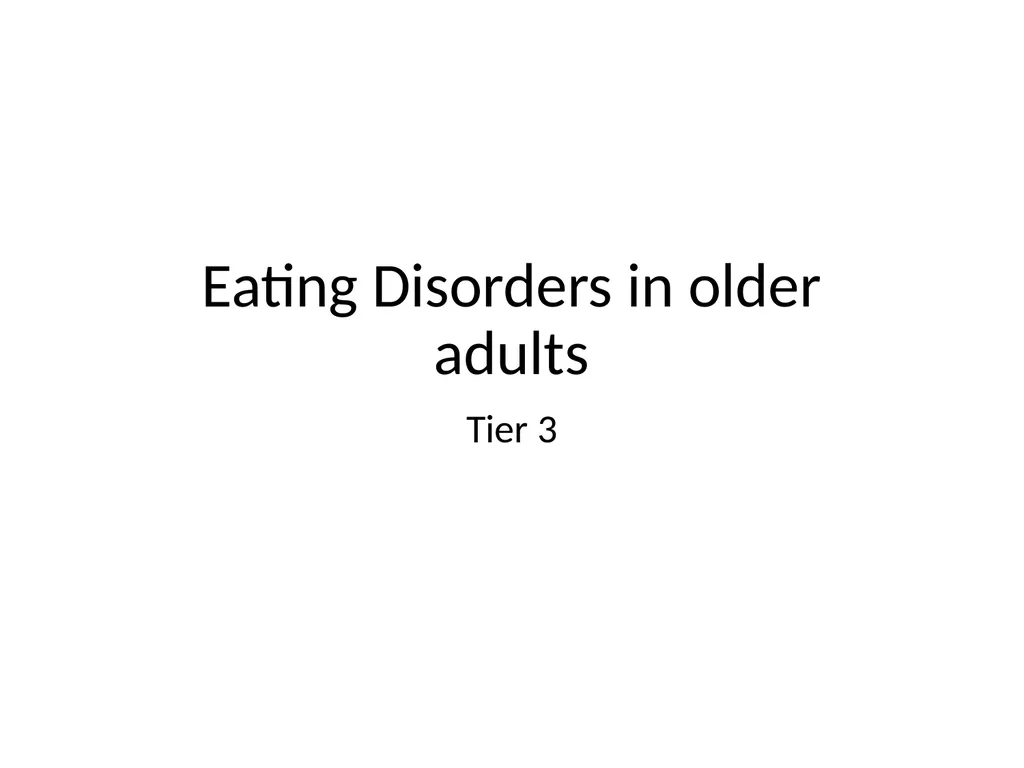
Author : tawny-fly | Published Date : 2025-05-13
Description: Eating Disorders in older adults Tier 3 Eating disorder An eating disorder is when the person has an unhealthy attitude to food which can over their life and make them ill. It can involve eating too much or too little, and or becomingDownload Presentation The PPT/PDF document "" is the property of its rightful owner. Permission is granted to download and print the materials on this website for personal, non-commercial use only, and to display it on your personal computer provided you do not modify the materials and that you retain all copyright notices contained in the materials. By downloading content from our website, you accept the terms of this agreement.
Here is the link to download the presentation.
"Eating Disorders in older adults Tier 3 Eating"The content belongs to its owner. You may download and print it for personal use, without modification, and keep all copyright notices. By downloading, you agree to these terms.













